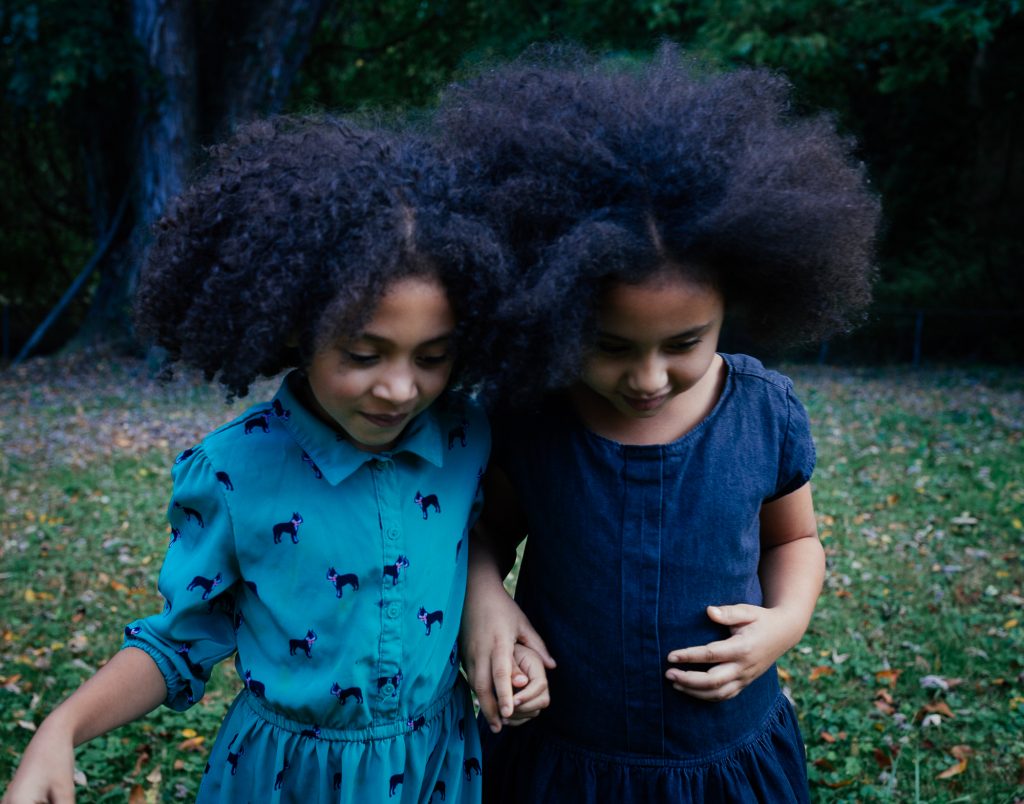
Family History
Nusrat’s parents were cousins with roots in Iran, her father born in India and her mother in Iraq. After they met, Nusrat’s father wanted her mother to return with him to India, where he was working, but she didn’t want to go. He left for India without her, and she remained in Iraq, pregnant with Nusrat. Nusrat’s parents decided to see each other again when she was five. This reunion required a sea journey of ten days and nights, from the small city of Karbala, Iraq to the big city of Bombay (now Mumbai), India.
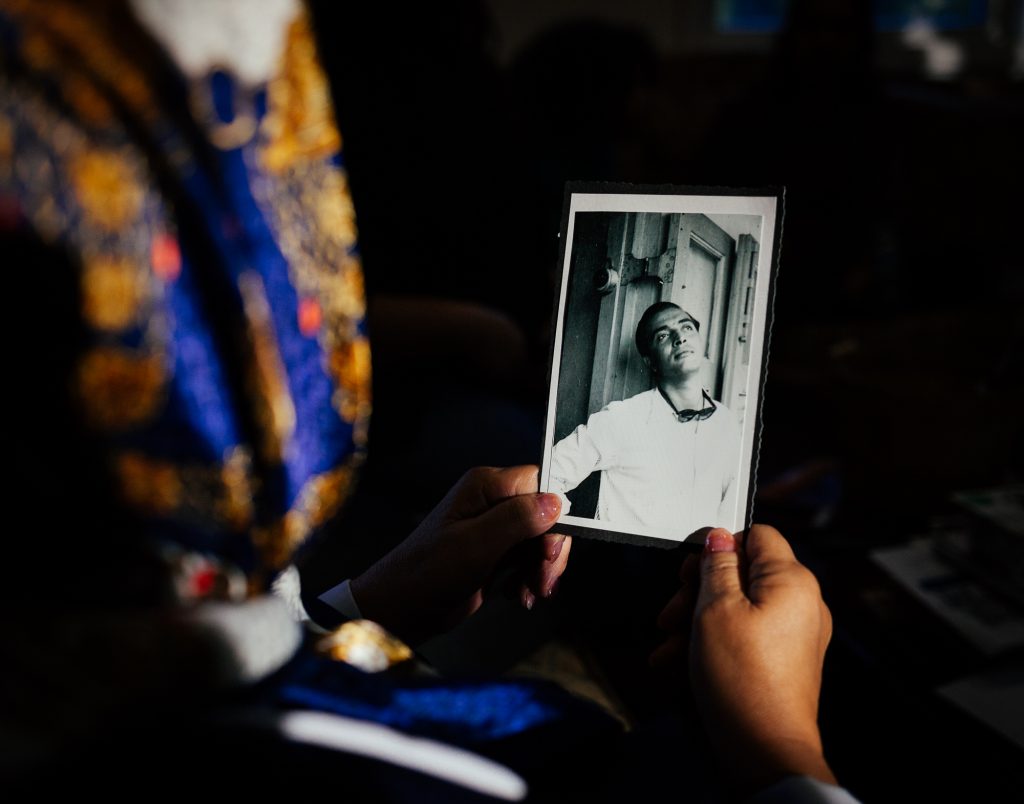
Nusrat never forgot her father’s graceful manner.
“Everybody loved him. Father always used to take my advice. It was me he used to consult. I was 16 years old when he bought a new house, and he asked me if it was a good idea. My mother didn’t like that.”

India
Nusrat lived for four years in Bombay, which was very different than life in Iraq, but she liked it. She especially loved the delicious Indian food their cook made.
“India has unbelievable art and food. It’s very rich. I don’t know why some people would call it the poorest country in the world?”
While Nusrat liked living in India, her mother did not. They visited Iran every summer, and every time it was harder and harder for her mother to return to India. She couldn’t adjust to the structured lifestyle full of expectations from relatives in India. Eventually, when Nusrat was nine, they moved to Tehran, Iran, and lived there for two decades.

Education
Nusrat’s ambition was always to go to college. In Iran at this time, 100,000 students took this intense exam, and only 4000 would be accepted. Luckily, Nusrat was one of the chosen few, and she started studying to be a history teacher. After graduation, the government would assign where you would teach, and this was a problem for her parents. They didn’t want their daughter going alone somewhere to teach. Her father gave her two choices: either work at the National Iran Oil company as he did or go to London, in the United Kingdom to further her studies.
“I went to London to study computers. That was my first time being separated from my mother and father.”
In 1974, Nusrat completed her degree in computers. Upon her return, she began working as an advanced computer consultant for the Iranian military in Tehran, digitizing their payroll. There weren’t many people in Iran who understood IBM computers as she did.

Meeting her Husband
While working in Tehran, the government paired her with a contractor from the US Marines. They chose Nusrat to train the American as she could speak English.
Her American counterpart, from Takoma Park, Maryland, invited her to go with him to the Caspian Sea on holiday. Nusrat needed her parents’ permission, so he had to ask her father first. When her parents met this American man, they “fell in love with him,” something Nusrat didn’t expect from her conservative Muslim family. He tried to learn Farsi to speak with them, and he converted to Islam. However, for Nusrat, the relationship was becoming toxic. Still, they married and continued living in Tehran for a few years.
Yvonne
Her first trip to the US was to give birth to her daughter Yvonne. Nusrat’s husband wanted his children to be born in America.
“It was Dec 26th, 1976 – snow was everywhere. The airplane landed at Ronald Reagan Airport, and it was beautiful. I was anxious to see his mother. As soon as she saw me, she said, ‘she’s colored. Send her back’! From that point on, it was an odd situation.” (audio below)

Nusrat’s daughter Yvonne [on left in the above photo] was born with twelve toes. Nusrat’s husband blamed her for this abnormality, saying it was because her parents were cousins. As Yvonne remembers,
“Father beat the hell out of my mother. He wasn’t even there when I was born, but when he saw her for the first time after I was born, he beat her up. He believed that she had given birth to a retarded child.”
Revolution
Nusrat returned to Iran after giving birth to her daughter. It was clear that things were changing in the country – the Iranian Revolution was brewing. In 1979 they fled to the US as part of a mass exodus of Americans.
“We were the last American people working over there. They took us with a Pan-American company airplane. Rushed us with military honor from a military station to the airport for protection. We got to Switzerland, turned on the TV, and saw that the government of the Shah had been disposed of, and the Ayatollah restored.” (audio below)
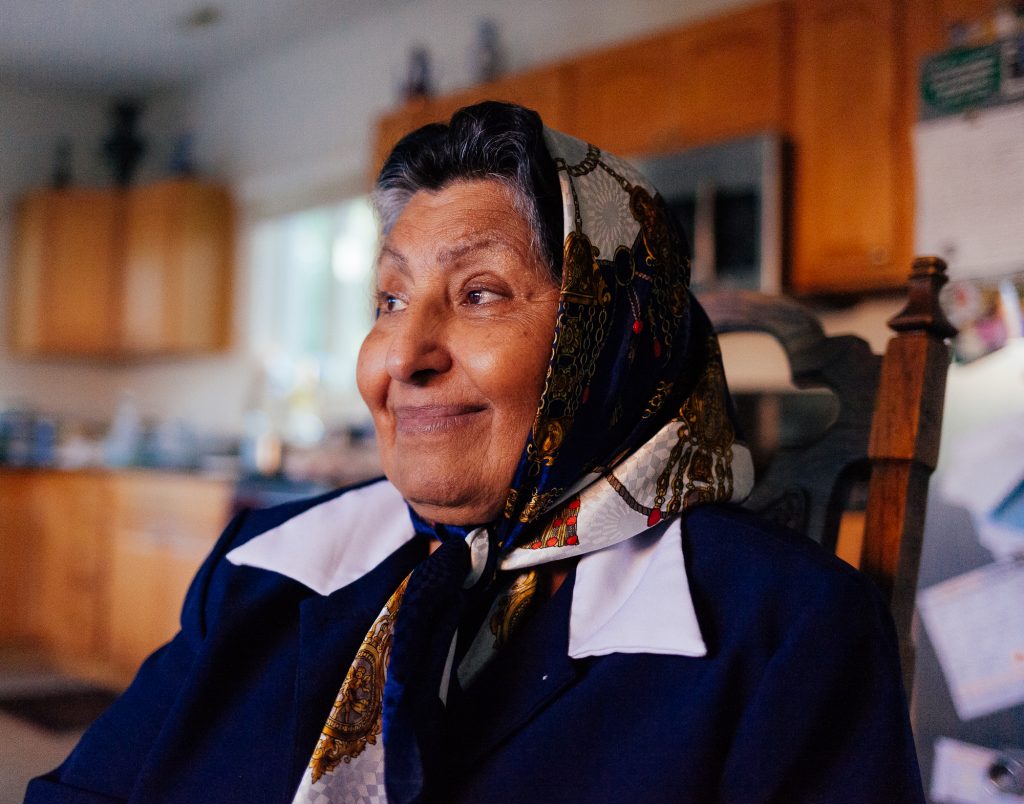
Maryland
Nusrat and her husband bought a house in Takoma Park, Maryland, where they would live for a decade.
“Takoma Park was a safe haven for interracial couples to live. It has always been a place that welcomes diversity.”
However, the emotional and physical violence from Nusrat’s husband didn’t stop once they were living in the US.
Yvonne remembers,
“It wasn’t easy for her being an immigrant here, and navigating the court system. My father would beat my mother up, the police would come, they would tell my father, ‘I’m sorry for bothering you.’ She called – they could see bruises on her face! That’s why she turned to religion for support. It was very hard to be a child and watch my mother done very wrong by my father trying to navigate a system that was not made for her. It was created for her to fail.” (audio below)
Furthermore, Nusrat’s mother-in-law would call her “nigger” at every opportunity and would feed her pork on purpose.
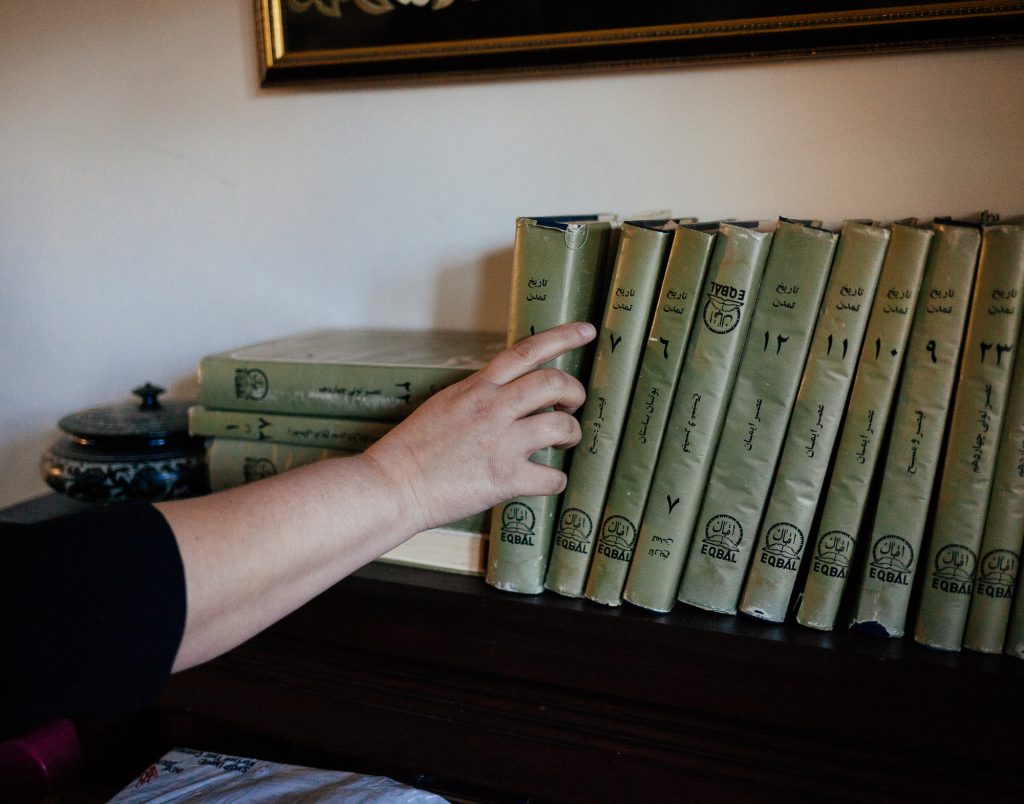
Despite the abuse, Nusrat never told her parents back in Iran that things were anything but perfect.
“I never said a word to my mother or father. I never told anybody.” (audio below)
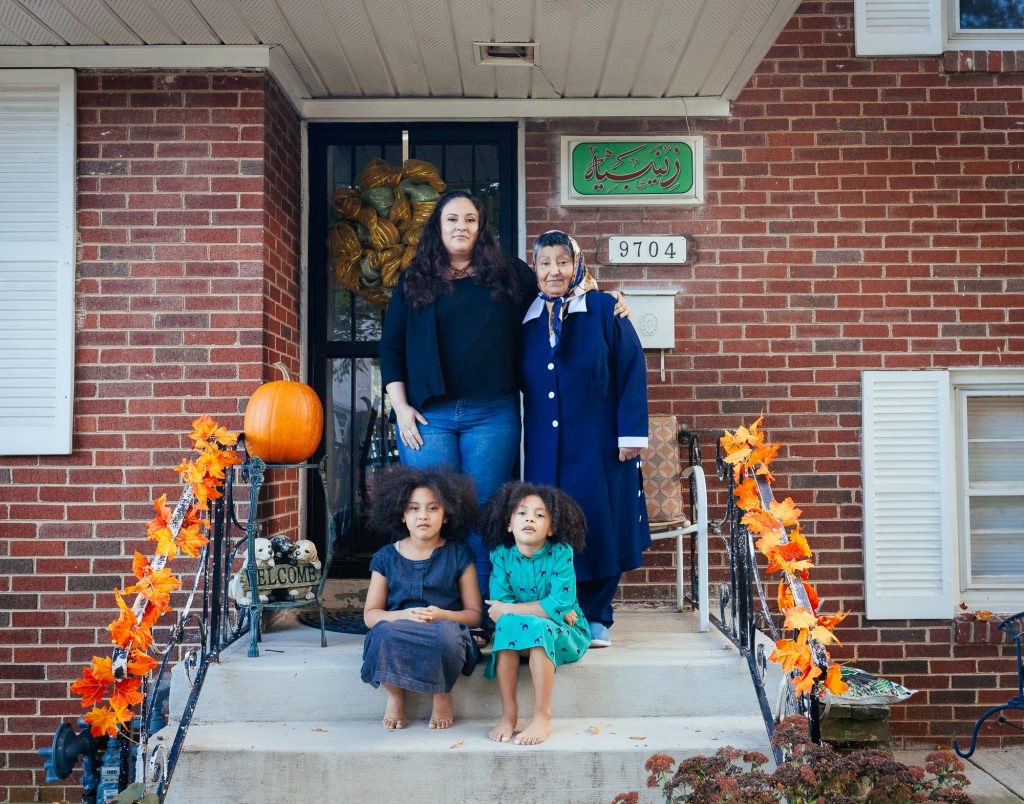
Homeless
When Nusrat finally got divorced, it left her and her three children homeless for nine months. They bounced from hotel, to motel, to the homes of people from the mosque.
All of this trauma made it very hard for Nusrat to be there for her children. When Yvonne was in tenth grade, her highschool English teacher adopted her.
Faith
After her divorce, Nusrat started getting more involved with the other Muslim women in her community. She met a woman from Guyana who asked her to teach the Quran. More and more people wanted her to teach them about Islam. For two decades, Nusrat taught at and hosted religious gatherings in her home. She would set up the prayer rug and have a Qur’anic study circle where they would pray and eat.

“When my mother got this house in Silver Spring, she wanted to devote it to God. I didn’t appreciate it when I was younger, but now I appreciate her commitment to something constructive.”
Community Leader
People from different Muslim communities around Maryland started asking Nusrat to perform marriage ceremonies and the Janazah funeral prayer. She would go through her grandfather’s books, trying to learn the best ways to perform these ceremonies. (audio below)

The first wedding Nusrat conducted was for the daughter of a friend. The bride’s father was Muslim, and her mother was Catholic. The father wanted the ceremony to have an Islamic component, so Nusrat performed the rituals in the church after the priest performed the Catholic tradition.
“I read this Ayah when I read verses of the Quran for marriage. ‘God created man and woman and put mercy and love between their hearts.’” (audio below)

Imam?
Nusrat never thought she would do all of the things she has done, specifically within Islam. While Nusrat didn’t call herself an Imam, Yvonne says that is essentially what she became.
“There have been some female Imams who have wanted to lead the Friday prayer and take on roles men have in Islam. My mother never wanted to be in that role. She has laid very low. I think that her story is compelling and there is a lot to learn from it in this day and age – politically, and culturally. It can open up a lot of people’s eyes about women in Islam. My mother would not be able to be an Imam in Iran. That happened here in this country and that’s pretty cool.” (audio below)
The Future
Nusrat lives with her daughter Yvonne and her two granddaughters who love to joke around and fill their home with youthful energy.

“My hopes and my dreams – I have nothing left. I hope to help raise my grandchildren to become good people. I tried very hard for the Muslim community’s children.” (audio below)

“I did a lot for Islam, but my intention was never to become anybody – I just went through whatever it was that was in my way. I intend to help raise my grandchildren with what I was taught, but also prepare them for how they need to be over here in America today, not 100 years ago.”
As Yvonne says,
“I was thinking about the American dream. What does that mean to me and my mother? People come here to America for a better life. Is it unpatriotic if you come here and you don’t have a better life? That your life is shittier? Does that mean you are ungrateful?” (audio below)

Sacrifice
Nusrat was happier in Iran than she has been in the United States. Yvonne understands the sacrifices her mother made.
“She was fine in her country and she didn’t have dreams or aspirations to come to America. She left what she knew to face beatings and discrimination. I hope that before she leaves the earth, she does feel that coming here for me was worth it.” (audio below)

*Update: Nusrat died on January 4th, 2019. On May 11th, 2019, after more than a decade of work, Yvonne finally finished writing her novel “Crying Girl”, which chronicles her mother’s incredible life.
#FINDINGAMERICAN
To receive updates on the book release and exhibition of “Finding American: Stories of Immigration from all 50 States” please subscribe here. This project is a labor of love and passion. If you would like to support its continuation, it would be greatly appreciated!
© Photos and text by Colin Boyd Shafer | Edited by Janice May & Kate Kamo McHugh. Quotes edited for clarity and brevity.


